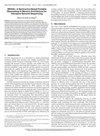CABANA : Cluster-Aware Query Batching for Accelerating Billion-Scale ANNS With Intel AMX
IF 1.4
3区 计算机科学
Q4 COMPUTER SCIENCE, HARDWARE & ARCHITECTURE
引用次数: 0
Abstract
Retrieval-augmented generation (RAG) systems increasingly rely on Approximate Nearest Neighbor Search (ANNS) to efficiently retrieve relevant context from billion-scale vector databases. While IVF-based ANNS frameworks scale well overall, the fine search stage remains a bottleneck due to its compute-intensive GEMV operations, particularly under large query volumes. To address this, we propose用Intel AMX加速十亿规模ANNS的集群感知查询批处理
检索增强生成(RAG)系统越来越依赖于近似最近邻搜索(ANNS)来有效地从十亿规模的向量数据库中检索相关上下文。虽然基于ivf的ANNS框架总体上扩展良好,但由于其计算密集型的GEMV操作,特别是在大查询量下,精细搜索阶段仍然是一个瓶颈。为了解决这个问题,我们提出了CABANA,这是一种使用英特尔高级矩阵扩展(AMX)的ANNS加速机制的集群感知查询批处理,它将这些GEMV计算重新制定为高吞吐量的GEMM操作。通过聚合针对相同集群的查询,CABANA可以在精细搜索期间进行批量计算,显著提高计算强度和内存访问规律。对十亿规模数据集的评估表明,CABANA优于传统的基于simd的实现,以最小的开销实现高达32.6倍的查询吞吐量,同时保持高召回率。
本文章由计算机程序翻译,如有差异,请以英文原文为准。
求助全文
约1分钟内获得全文
求助全文
来源期刊

IEEE Computer Architecture Letters
COMPUTER SCIENCE, HARDWARE & ARCHITECTURE-
CiteScore
4.60
自引率
4.30%
发文量
29
期刊介绍:
IEEE Computer Architecture Letters is a rigorously peer-reviewed forum for publishing early, high-impact results in the areas of uni- and multiprocessor computer systems, computer architecture, microarchitecture, workload characterization, performance evaluation and simulation techniques, and power-aware computing. Submissions are welcomed on any topic in computer architecture, especially but not limited to: microprocessor and multiprocessor systems, microarchitecture and ILP processors, workload characterization, performance evaluation and simulation techniques, compiler-hardware and operating system-hardware interactions, interconnect architectures, memory and cache systems, power and thermal issues at the architecture level, I/O architectures and techniques, independent validation of previously published results, analysis of unsuccessful techniques, domain-specific processor architectures (e.g., embedded, graphics, network, etc.), real-time and high-availability architectures, reconfigurable systems.
 求助内容:
求助内容: 应助结果提醒方式:
应助结果提醒方式:


